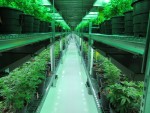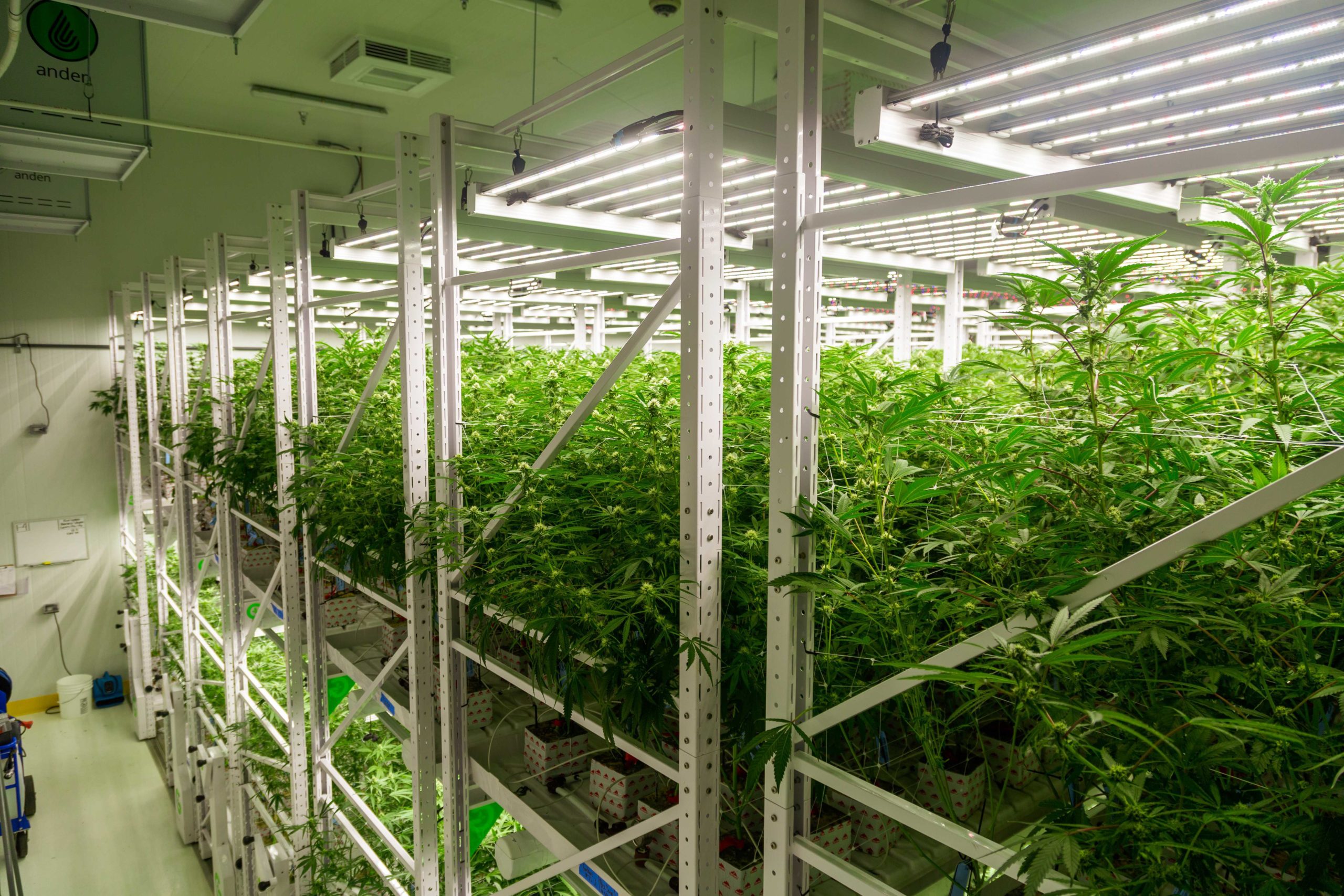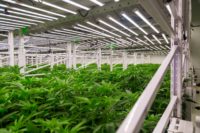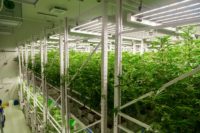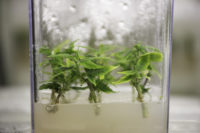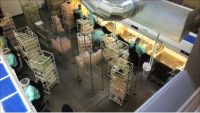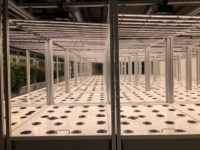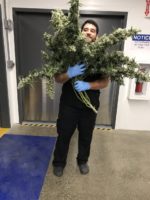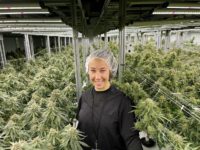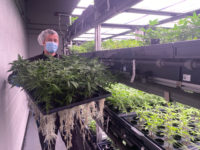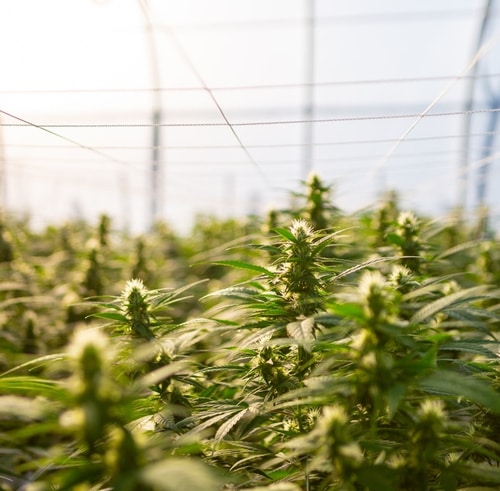Creating a healthy cannabis growing environment based on the science behind growing top-notch, medical-grade cannabis is essential for producing consistent results, assuming you start with quality genetics. Before speaking about the environment, it is necessary to highlight that quality and consistency has to first start with quality plant material. In this article, we will explore six key factors that make for a healthy cannabis growing environment and how regular testing allows growers to achieve consistency and quality. Keep in mind, optimizing these factors to the cannabis strains and environment they are grown in is a must.
Lighting
Lighting is the most important factor in creating a good cannabis growing environment. Cannabis plants require specific types, wavelength and exposure times to grow and produce high-quality flower. The two main types of light that are essential for cannabis growth are blue and red spectrum light where blue is primarily dedicated to vegetative growing and red for flowering. The exposure time is necessary for non-autoflower cannabis to maintain a vegetative or a flowering plant.
 To ensure that the plants are receiving the right type and amount of light, growers can use specialized grow lights that provide both blue and red spectrum light. They can also monitor the intensity and duration of light using light meters and timers. Regular testing of the light spectrum and intensity can help growers fine-tune their lighting setup for optimal plant growth and flower development.
To ensure that the plants are receiving the right type and amount of light, growers can use specialized grow lights that provide both blue and red spectrum light. They can also monitor the intensity and duration of light using light meters and timers. Regular testing of the light spectrum and intensity can help growers fine-tune their lighting setup for optimal plant growth and flower development.
Temperature
Temperature always needs to be considered when creating a strong, healthy cannabis growing environment. Cannabis plants prefer a warm, humid environment, but temperatures that are too high or too low can negatively affect plant growth and flower development. The ideal temperature range for cannabis growth is between 70-85°F (21-29°C) during the day and between 58-70°F (14-21°C) at night.
To maintain a consistent temperature in the growing environment, growers can use temperature-controlled grow rooms or HVAC systems. They can also monitor the temperature using digital thermometers and adjust the temperature as needed. Regular testing of the temperature can help growers identify and address any temperature fluctuations that may affect plant growth and flower development.
Humidity
Like other factors that require precision, humidity needs to be carefully dialed in when creating an optimal cannabis growing environment. Cannabis plants prefer a humid environment, but too much humidity can promote the growth of mold and mildew. On the other hand, low humidity can cause the plants to dry out and become stressed.

To maintain a consistent humidity level, growers can use humidifiers and dehumidifiers in the growing environment. They can also monitor the humidity level using a hygrometer and adjust the humidity as needed. Regular testing of the humidity level can help growers identify and address any issues that may affect plant growth and flower development.
Airflow and Ventilation
Proper ventilation helps regulate temperature and humidity and prevents the buildup of carbon dioxide, which can be harmful to the plants. It also helps prevent the growth of mold and mildew. To ensure proper airflow and ventilation, growers can use fans and air ducts in the growing environment. They can also use carbon filters to remove odors and other contaminants from the air. Regular testing of the air quality can help growers identify and address any issues that may affect plant growth and flower development.
Nutrients
Nutrients are a non-negotiable for cannabis growth and flower development. Cannabis plants require a balanced supply of macronutrients such as nitrogen, phosphorus and potassium, as well as micronutrients such as calcium, magnesium and iron.
To ensure that the plants receive the right amount of nutrients, growers can use nutrient-rich soils or hydroponic systems. They can also supplement with fertilizers and other nutrients. Regular testing of the nutrient levels in the soil or growing medium can help growers adjust their nutrient regimen for optimal plant growth and flower development.
Pest and Disease Management
Cannabis plants are susceptible to over 90+ pests and diseases, including insects, mold, mildew, viruses and viroids commonly infected through the environment by touch, air, water and nutrients. The most common are spider mites, aphids, powdery mildew, botrytis, fusarium and hop latent viroid. It is estimated by the United Nations that 20% to 40% of total global crop loss is due to improper pest and disease management. The cannabis growing environment is no different.
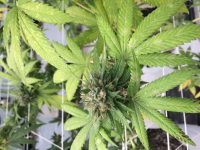
While lighting, humidity, air flow and nutrients are key aspects for a cannabis growth environment, the most common overlooked aspect of growing is proper pest and disease management. Cannabis plants are susceptible to a variety of pests and diseases, which can have a significant impact on plant health and crop yields. To take optimizing a cannabis growing environment one step further, here are five essentials for developing an effective pest and disease management setup.
-
Prevention
Prevention is the first and most important step in pest and disease management. Growers should always take steps to prevent pests and diseases from entering or infesting the growing environment in the first place. This can be done by quarantining new plants or clones, using clean equipment, sterilizing the growing area, and monitoring plants for signs of pests and diseases through both visual inspection as well as testing.
Some diseases such as those caused by viruses and viroids, require molecular based testing to identify. Growers should quarantine and test any new plants or clones before introducing them to the growing area. This can help prevent the spread of pests and diseases from infected plants to healthy ones. Growers can also use biological controls, such as beneficial insects, to help prevent pests from infesting the plants. These insects can help control pest populations by preying on them or interfering with their reproduction.
- Early Detection
Early detection is key to preventing an entire crop from being infected and scrapped. Growers need to regularly inspect their plants for signs of pests and diseases, including yellowing leaves, discoloration, spots and unusual growth patterns. Early detection can help prevent the spread of pests and diseases and limit the damage they cause, not to mention saving a business’s bottom line!
- Integrated Pest Management
Integrated Pest Management (IPM) is an approach to pest and disease management that involves a combination of preventative measures, biological controls and chemical treatments. IPM aims to reduce the use of chemical pesticides, which can be harmful to the environment and human health.
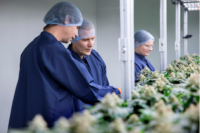 IPM involves regular monitoring of plants for signs of pests and diseases, using biological controls to prevent and control infestations, and only using chemical treatments as a last resort. Chemical treatments should be used sparingly and only when necessary, and growers should follow all safety precautions when using them.
IPM involves regular monitoring of plants for signs of pests and diseases, using biological controls to prevent and control infestations, and only using chemical treatments as a last resort. Chemical treatments should be used sparingly and only when necessary, and growers should follow all safety precautions when using them.
- Sanitation
Taking the necessary precautions to ensure all equipment used throughout a cultivation is properly sterilized will save growers from countless headaches. Growers should keep the growing area clean and free of debris, which can provide a breeding ground for pests and diseases. They should also regularly sterilize equipment and growing containers to prevent the spread of pathogens.
- Record Keeping
Record keeping is essential for effective pest and disease management in the growing environment. Keep detailed records of all pest and disease issues, including the type of pest or disease, the severity of the infestation, and the treatments used. Cultivators, you will thank yourselves later! This will help identify recurring issues and develop effective pest and disease management strategies.
While there are key aspects of creating a healthy cannabis growing environment, the most common overlooked aspect of growing is on proper pest and disease management, which involves prevention, early detection, integrated pest management, sanitation, quarantine, and record keeping. By taking these steps, growers can help ensure the health and vitality of their plants, produce high-quality cannabis that consumers want and preserve their business’s bottom lines.












